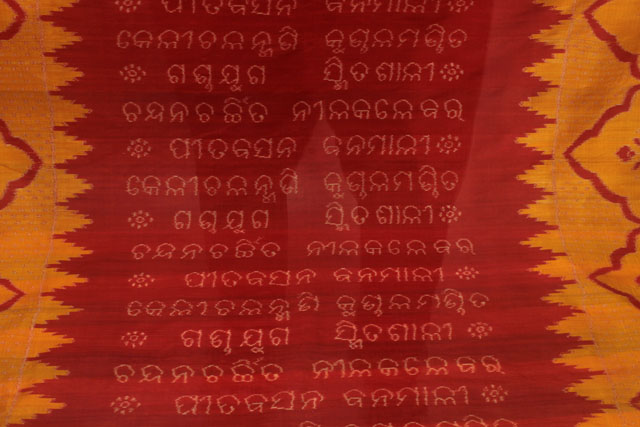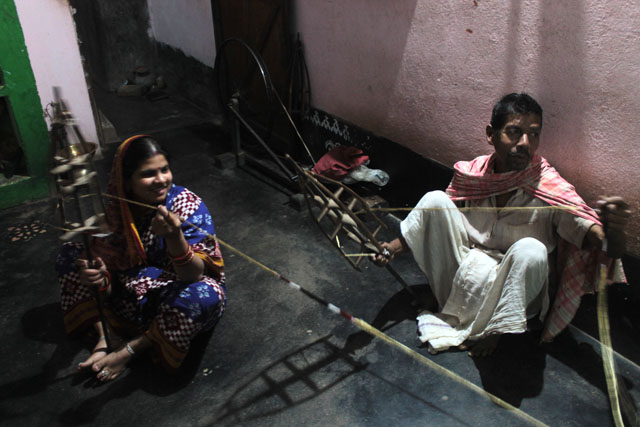Maniabandha, a weavers village, is a delightful specimen of religious synchronization between Buddhists and Hindus who take part in each other’s festivals and spiritual get-togethers
BHUBANESWAR: Though Odissi Sarees enjoy great reverence across the state, few Odias posses the knowledge about the weaving of Odissi Sarees and the influences it carries.
The state has been deeply influenced by Lord Buddha and Buddhism from 1st millennium BCE. According to sources, Tapassu and Bhallika, two merchant brothers from Utkala, who toured Madhya Desa, became the first lay devotees of the Buddha by offering him his first meal after enlightenment.
They carried his blessings back to the state which can be now seen in the Odissi Nine Yards. Orissa Post interacted with a historian, weavers, servitors of Srimandir and fashion designers of Odissi sarees to delve deeper into the subject.
Historian Jitu Mishra said, “Ashoka, a cruel king from the adjoining state of Magadh, altered into a man of empathy and turned a new leaf. Thus began a new chapter of Buddhism. Soon thousands of Buddhists who were weavers of the highest order sewed sarees of Maniabandha at a village called Manibandha. These weavers offered a saree of Maniabandha to Chinese scholar monk Huen T’Sang packed in a hollow bamboo pipe in the 7th century CE. Huen T’Sang was visibly impressed with the wizardry of weaving and spread this amazing work globally.”
Jagat Mahakuda, a servitor at Puri Jagnnath Temple, said, “The Buddhist weavers of Maniabandha prospered only after they received support from the Lord Jagannath Temple at Puri. According to Madala Panji, the temple record, during the 12th century CE, poet Jaydev had presented an Ikat called Pata Khandua made by Maniabandha weavers, with the verses of Gita Govinda etched on it to Lord Jagannath. Since then, the weavers are deeply associated with the Jagannath cult.”

Kumar G Mishra, a renowned designer of Bhubaneswar, said, “Maniabandha weavers are perhaps the only traditional Buddhists left in India. They are vegans and supporters of non-violence that can be seen even in their weaving. The silk yarns they use are of ‘Eri’ group which is obtained from the shells that were abandoned by the silkworms.”
“Therefore, Pata Khandua, is the best example of Samyak Ajiba – Right Profession – as addressed by Lord Buddha. The word ‘Khandua’ in Odia interprets to the fabric that is worn on the lower part of the body. It is traditionally red or orange in colour. Design motifs include petaled flowers, elephants encircled by sprawling vines with peacocks in it, and Nabagunjara, a legendary cult related to Lord Jagannath,” he added.
Weaver Arkhita Gosain, who has been weaving Maniabandha sarees and Khandua Patta for the last 15 years said, “The whole process of making a saree is like singing a prayer or following a ritual. While weaving, I have experienced divinity around me although many don’t believe my version. Nevertheless, it’s God’s work and I am happy to do it.”
Today, Maniabandha is not only a significant destination for textile lovers, but also for those having profound interest in understanding and appreciating the syncretic philosophy practiced in the area. The weavers are no doubt Buddhists but they are also followers of Lord Jagannath and this is visible not only in the motifs on Khandua but also in the way they live and worship. Maniabandha is a delightful specimen of religious synchronization between Buddhists and Hindus who take part in each other’s festivals and spiritual get-togethers. The yarns that bind them are pure and celestial just like the Pata Khandua.
Chaitali Shome,OP

